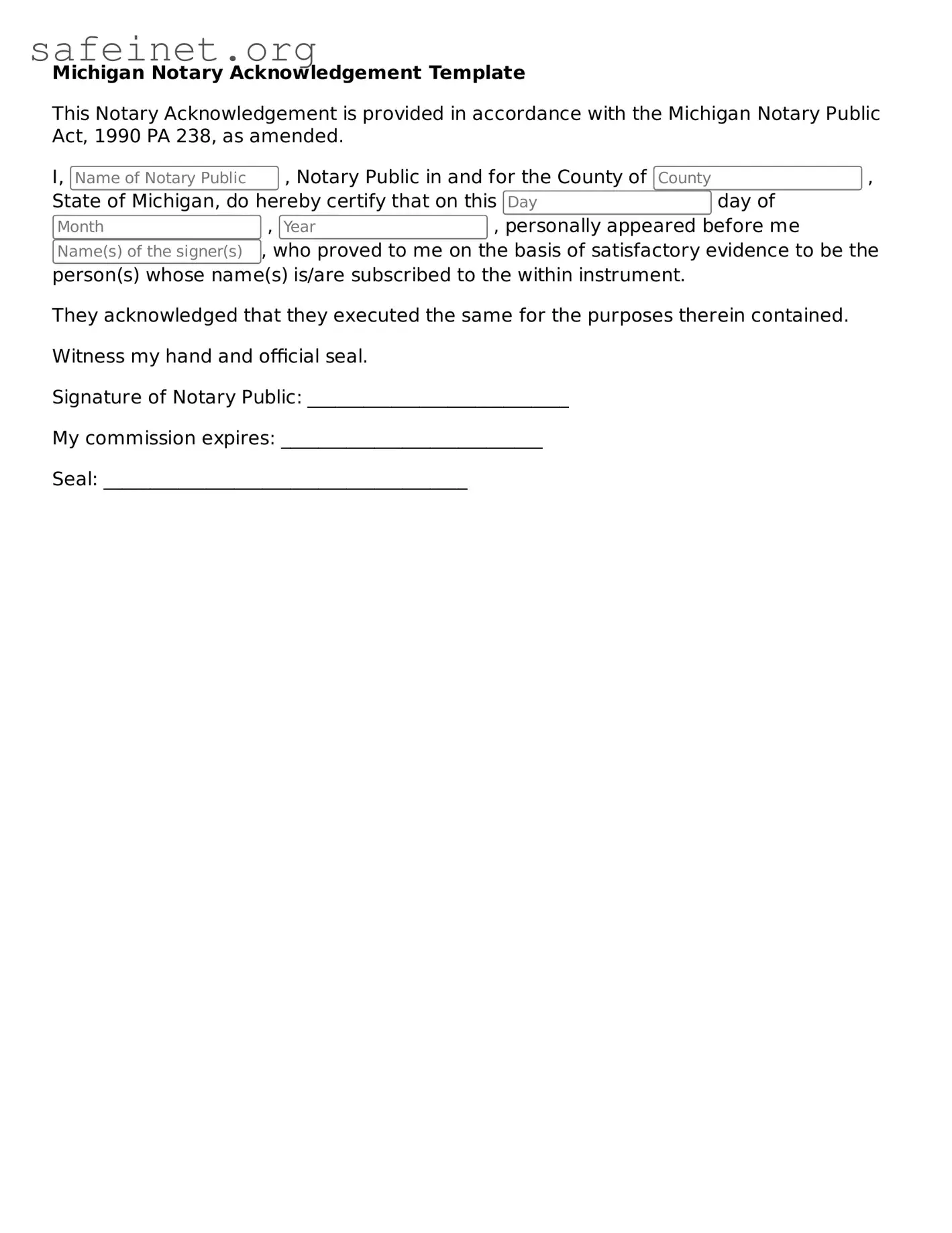The Affidavit is a document where an individual makes a sworn statement of fact. Like the Michigan Notary Acknowledgment form, it requires a signature in the presence of a notary public. Both documents validate the identity of the person making the statement and ensure that the statement is legally binding. An affidavit can serve various purposes, from verifying facts in a legal proceeding to affirming the truthfulness of certain claims, similar to how acknowledgment indicates that a signatory willingly signed a document.
Another similar document is the Power of Attorney (POA). A Power of Attorney authorizes someone to act on another person's behalf. This document must also be notarized to ensure that the principal's signature is genuine and that they understand the nature of the authority they are granting. The notary's role in both a POA and a Notary Acknowledgment is to provide a layer of protection against fraud and to confirm that the signatory is not under duress.
The Trust Agreement often uses a Notary Acknowledgment for establishing a legal framework for how assets will be managed and transferred. Just like the Michigan Notary Acknowledgment form, a Trust Agreement requires the signatures of involved parties to be notarized to ensure their authenticity. Notarization in both cases helps to prevent disputes regarding consent and the intentions of the involved parties.
A Bill of Sale is another document that shares similarities with the Notary Acknowledgment form. It is used to transfer ownership of personal property from one individual to another. Notarization adds credibility to a Bill of Sale, confirming the identities of the parties involved. This ensures clarity about who transferred what, similar to how a Notary Acknowledgment ensures that the signatory agrees to the terms of the document.
The Deed is a critical legal document used in real estate transactions, conveying ownership of a property. Much like the Notary Acknowledgment form, a Deed must be signed in the presence of a notary to validate its execution. This notarization process protects all parties involved, creating an official record that confirms the transfer of property rights has occurred willingly and without coercion.
A Certificate of Authenticity serves as a declaration that an item, often a piece of art or collectible, is genuine. Similar to the Michigan Notary Acknowledgment, this document, when notarized, affirms the identity of the signer, thus adding legitimacy to the claim of authenticity. This process protects both the seller and the buyer from potential fraud, ensuring that the transaction is based on trustworthy information.
The Lease Agreement also bears similarities to the Notary Acknowledgment form. A Lease Agreement outlines the terms under which one party rents property from another. Having this document notarized adds legal weight to the agreement, confirming that both parties are in agreement with the terms and conditions. This mutual acknowledgment protects the rights of both the landlord and the tenant, much like how a Notary Acknowledgment protects the interests of those involved in signing a legal document.
Lastly, a Testimony Declaration serves as a formal statement by a witness in legal proceedings. Like the Notary Acknowledgment form, it requires signing in front of a notary to verify the identity of the individual providing the testimony. This notarization enhances the credibility of the declaration, ensuring that the witness is truthful and has voluntarily provided their statement, paralleling the purpose of an acknowledgment in confirming a signature's validity.
